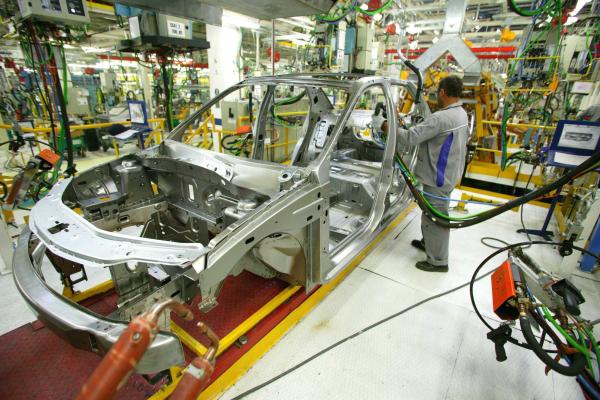Overview
Every year, over six million vehicles in Europe reach the end of their life and are treated as waste. When end-of-life vehicles (ELVs) are not properly managed, they can cause environmental problems and the European economy loses millions of tonnes of materials.
The automotive manufacturing industry is among the largest consumers of primary raw materials such as steel, aluminium, copper, and plastics, but makes little use of recycled materials. Although the recycling rates of materials from ELVs are generally high, the scrap metals produced are of low quality and only small amounts of plastic are recycled.
Background
The Directive on end-of-life vehicles (ELV Directive) sets clear targets for ELVs and their components. It also prohibits the use of hazardous substances when manufacturing new vehicles (especially lead, mercury, cadmium and hexavalent chromium) except in defined exemptions when there are no adequate alternatives. The exemptions are listed in annex II of the Directive.
Since this Directive was introduced, several amendments have been made (for more information, see amendments below). The EU has also introduced several related rules such as the Directive on the type-approval of motor vehicles regarding their reusability, recyclability and recoverability.
A review of the ELV Directive was launched in 2021, resulting in a proposal for a new regulation in 2023.
See the proposed End of Life Vehicles Regulation and clarifications on the proposal, or see the factsheet
Objectives
The Directive sets clear targets for the reuse, recycling and recovery of ELVs and aims to
- prevent and limit waste from end-of-life vehicles and their components
- improve the environmental performance of all economic operators involved in the life-cycle of vehicles
Law
- Directive on end-of-life vehicles
- Directive on end-of-life vehicles (consolidated version)
- Summary of EU Waste Legislation on ELVs
Amendments
Directive 2000/53/EU on end-of-life vehicles restricts the use of certain hazardous substances (lead, mercury, hexavalent chromium and cadmium) in vehicles put on the market after 1 July 2003. Possible exemptions for the use of these substances are set out in Annex II. It is regularly adapted to scientific and technical progress by the Commission according to Article 4(2)(b) of the Directive in order to address when the use of the restricted substances reflected in the exemptions has become avoidable or whether the scope of the exemptions can be narrowed.
In March 2023, Delegated Directive 2023/544 amending Directive 2000/53/EC of the European Parliament and of the Council as regards the exemptions for the use of lead in aluminium alloys for machining purposes, in copper alloys and in certain batteries entered into force.
The exemptions of Annex II of Directive 2000/53/EC have become due for review. Stakeholder consultation is open from 8th February 2024 to 18th April 2024.
Review
On 13 July 2023 the Commission proposed a new Regulation on end-of-life vehicles, following a review. In line with the European Green Deal and with the Circular Economy Action Plan, the proposal for an ELV Regulation builds on and replaces two existing Directives: Directive 2000/53/EC on end-of-life vehicles and Directive 2005/64/EC on the type-approval of motor vehicles with regard to their reusability, recyclability and recoverability.
The proposed new rules cover all aspects of a vehicle from its design and placement on the market until its final treatment at the end-of-life:
- improve circular design of vehicles to facilitate removal of materials, parts and components for reuse and recycling
- ensure that at least 25% of plastic used to build a vehicle comes from recycling (of which 25% from recycled ELVs)
- recover more and better-quality raw materials, including CRMs, plastics, steel and aluminium
- ensure that producers are made financially responsible for vehicles when they become waste, to ensure proper financing for mandatory ELV treatment operations and incentivise recyclers to improve quality
- put a stop to vehicles going “missing”, through more inspections, interoperability of national vehicle registration systems, improved distinction of used vehicles from end-of-life vehicles and a ban on exporting used vehicles that aren’t roadworthy
- cover more vehicles, and gradually expand EU rules to include new categories such as motorcycles, lorries, and buses, ensuring a proper end of life treatment.
Implementation
Monitoring
The EU has rules on monitoring the targets of the ELV Directive for reuse/recovery and reuse/recycling.
Member States must provide the required data on an annual basis, within 18 months of the end of the relevant year (e.g. by 30 June 2022 for the year 2020). See relevant data on EUROSTAT.
Implementation reports
Commission implementation reports are based on information provided by Member States pursuant to Commission Decision 2001/753/EC concerning a questionnaire for Member States reports on the implementation of the ELV Directive.
Find here the reports: Period 2014 to 2017, periods 2011 to 2014 and 2008 to 2011, period 2005 to 2008, period 2002 to 2005.
- 13 July 2023Proposal for the ELV Regulation
- 20 July - 26 October 2021Public consultation on the revision of EU rules on end-of-life vehicles
- 22 October-19 November 2020Roadmap for the Impact Assessment of the ELV Directive published
- 15 September - 8 December 2020Stakeholder consultation on the renewal of three exemptions
For more information visit https://elv.biois.eu/
- 18 September 2000Directive on end-of-life vehicles enters into force
Related links
Main law: Directive on end-of-life vehicles
Entry into force: 18 September 2000
Related law:
Related topics: Circular economy Waste and recycling
Related strategies: Circular economy action plan
Related Commission priorities: European Green Deal

